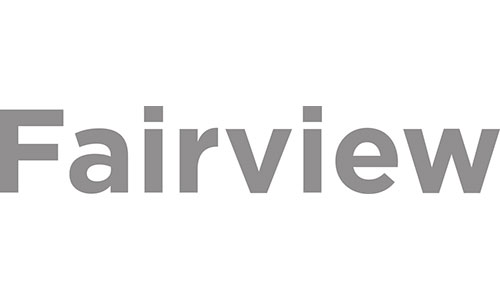One of the biggest challenges for organizations today is the national low unemployment rate. When a position is open, it’s hard to find the right talent to fill that position. At Creative Arcade, we have been asked on multiple occasions about how to break through and help find that talent in other ways. One of those ways is Inbound Recruitment. In Episode 027, we discuss the challenge, our approach and how it can impact your organization’s hiring, company culture and approach to telling your story.
{{cta(’24deb4c2-758c-4f24-bc12-b3662d94b375′)}}
Transcription
______________________________________________________
Jeff: Podcast number?
Phil: 27.
Jeff: Yes.
Phil: You didn’t think I knew, did you?
Jeff: You read the notes.
Phil: [inaudible 00:00:28] notes. No, I just knew how to count.
Jeff: Oh, okay. Just a little housekeeping stuff. We doubled our space. You know that? Not in here.
Phil: Oh, across the hall.
Jeff: Yep.
Phil: Yeah.
Jeff: We added another office across the hall now, so we’ve doubled our space, and we’re gonna do some before and after photos soon. As soon as the after is done.
Phil: What are we gonna do over there?
Jeff: Well, we’ll make podcasts over there soon.
Phil: Good, good. Yeah.
Jeff: This is our second location in the podcast series. Third if you count the car.
Phil: That’s true.
Jeff: Yeah.
Phil: I have to say though, so far this has been my favorite from a look standpoint.
Jeff: Right.
Phil: The other room was fine, but sitting down and just fighting with the natural light, and they always look different. Yeah, this has been pretty good.
Jeff: All right. Our followers don’t want to hear about that stuff. They want to hear about inbound recruitment.
Phil: Wow, that escalated quickly.
Jeff: Yeah. Was that a good segway?
Phil: Smooth.
Jeff: Smooth.
Phil: Smooth. I’d call it a smooth segway.
Jeff: Speaking of inbound recruitment.
Phil: Yeah. No, we always try to tackle marketing themes in the podcast, and we’ve touched on a lot of different things. Yeah, this time I thought we’d talk about something that we’ve actually talked to some of our clients about recently. That doesn’t seem like it’d be a problem, but it is.
Jeff: You writing a book over here?
Phil: What do you mean? This is all my notes. Guess which parts are important?
Jeff: All of it’s highlighted. You saw it too, didn’t you?
Phil: What?
Jeff: Just making myself comfortable here. Okay, so [crosstalk 00:02:24]-
Phil: Problem basically is we’ve been approached by a couple organization, and we work with a lot of different ones from healthcare to government, and it’s kind of the same story across the board. That is a fact that we have such low unemployment right now.
Jeff: In this country.
Phil: Overall, that they’re having a lot of issues. It’s not just higher end positions. It’s everything from bank tellers to you name it, and they’re having issues with not only gaining qualified candidates, but retaining them. Lately, we’ve been tasked with what do we do as an organization to kind of help us fill those important positions because obviously as an organization, you need key things filled all the way down the line in order for you to run good, right? To have one that’s efficient and one that then provided all services and things that you’d expect.
Jeff: Can I say a couple other things before you jump in there. Couple of reasons maybe they’re not finding candidates? Right. I would say one of them because of low unemployment, people have jobs now so they’re not necessarily looking.
Phil: They’re not necessarily looking.
Jeff: Especially the higher end people that people might be looking for.
Phil: Right.
Jeff: What was my other one? The-
Phil: Well, I was gonna say, and that’s a good point. I think another one is when you do have so many filled, but when you do have one that might be really specialized, well if they’re all in their own specialized position or what’s left if you will, as if checking a box or two. You can’t just go hire anyone you see, right?
Jeff: Right.
Phil: It becomes a two way street.
Jeff: Right. I know what my other thing I was gonna say was those people that do end up maybe interviewing or seeking out the position, they’re gonna be a lot more demanding.
Phil: Yeah.
Jeff: They already have a job. They might even have a job they love and like, or love or like. If they’re looking then they want that big jump. They might, you know, salary or vacation or things like that. They’re gonna be a lot more demanding which the hiring place might not be able to-
Phil: To provide.
Jeff: Right.
Phil: Yeah. Yeah. We have a couple things here, and I’m just gonna talk about them. Talent is a business priority. This is part of the problem. It’s that, yeah, people aren’t always looking for a job like you just said. Sometimes people might just be like, well, I’m happy here but I’m gonna see what’s out there. I’m gonna poke around a little bit, see what else is out there. I think a lot of times in organizations, if they’re large enough, they might already have an HR department or an HR director, or some group of people that’s their job to keep that. But it’s not their weight to basically bare all the time. It really becomes a organizational problem. In order for them to find the right people, that everyone needs to kind of have an equal part in that. Talent really should be a … and getting talent is a business priority. That’s part of the problem.
Phil: Recruiting has changed. We found in some of our research that there’s a lot of people start their search on Google, and I think that’s where a lot of people start any search nowadays is on Google for whatever they’re looking for. That includes employment. Definitely recruiting has changed. Like you said, what they’re looking for or what people might be looking for is also with that. If they’re looking online and they’re Googling things, they’re expecting to find things. If it’s not there, maybe you’re missing the boat or … Because maybe they want to see what their culture’s like. What are some of the other things that makes this company better than working for this company. Sometimes it’s not always just about the benefits and the money part of it. It’s all the other tangibles I guess.
Phil: Then, the current workforce, we’ve got the three big groups right now demographic wise, Baby Boomers, Gen X, Millennials. They’re all at different points in their careers, and so a lot of where they’re at in life in the work force also has an impact on that.
Jeff: I would say that Gen Xers, or I’m sorry the Baby Boomers are typically staying put. Looking maybe for retirement.
Phil: Yes.
Jeff: Yeah.
Phil: Yeah.
Jeff: Unless something great came along, then there-
Phil: Right. There’d be a reason to do that, but a lot of them have probably been there, wherever they’re at for a long time so why would they move now. But yeah.
Jeff: Right.
Phil: Unless there’s some big reason why they would do it. Yeah.
Jeff: Closer to retirement. They don’t want to rock the boat. They don’t want to learn new position maybe, things like that.
Phil: Gen Xers, kind of the same thing in a way. They’re kind of at a point where they’re probably 20, 25 years into their … They’re kind of halfway there if you will to retirement age. Some are willing to kind of just settle in and kind of ride it out. Some still will obviously change jobs. People are always gonna change jobs sometimes, but for whatever reason life happens. But they’re kind of sticking it out. Maybe their reasons for changing are different than maybe someone else.
Phil: Then, we follow Millennials. Well, for them just the way they are and the way they see the world, they’re not tied to one specific place, whatever. They’re looking for making an impact. Where can I best do that. There’s a lot of different reasons for the Millennial generation to consider. Of course, they’re tech savvy, and kind of grew up on the internet if you will. That’s of course really gonna be.
Jeff: One of the notes in here that I think is interesting that you might not think about is talking about the Baby Boomers that are close to retirement, they’re gonna take that knowledge with them. That’s kind of a scary thing to me in some industries. That some of those things might be-
Phil: The wisdom.
Jeff: Yeah. Might be lost.
Phil: Yeah. Those are all the big kind of broken out reasons why some of the problems outside of just the fact that everyone has a job right now is plaguing some organizations. Anyways, the solution that we’ve talked about, we’ve talked about this in general before. We’ve talked about inbound marketing. Our solution to this is inbound recruiting which is really the same thing.
Jeff: Same thing, different product.
Phil: Different product. Different but a lot of the same tactics. Lot of the same methodologies. You might be saying well what is inbound marketing even, and so take a step back really quickly without going into too much detail. But basically, it’s providing value through content, and sharing that content online. Which basically … because people start with a Google search. [inaudible 00:09:27] we talk about before. Putting out content, revolving around a variety of topics and challenges, and solving of problems for a specific person or a persona if you will, or even a group of people that’s important to them because they’re gonna be looking for those things.
Phil: We’re basically helping clients create this content, put it out, and it’s sort of engaging process where as a company organization you’re generating those people as leads, there’s lead generation, and engaging them in a way that either gets them to become a customer, or in this case a candidate when we talk about recruiting. That can be with blogs, that can be with social media, landing pages, and different kinds of downloadable content or video. There’s a whole slue of different content that we can provide out there that people are consuming and ultimately finding valuable. That’s a really quick inbound marketing-esque explanation. But basically, we’re supplying that same idea to recruiting.
Jeff: I would just pause you there for a second. If you do want to learn more about inbound marketing, we have more information on other videos we’ve done, other podcasts, and also on our website.
Phil: We’ll put links into the blog post and stuff.
Jeff: That’s a good idea.
Phil: Yeah, or if you’re curious.
Jeff: Yeah.
Phil: Yeah. That was a solution that we’ve kind of brought to them. You might be saying, well, what’s involved in that? A lot of times, it’s taking a step back and really looking at your organization, and kind of reviewing your hiring process because some might be looking for a position. Really making sure you have a process down that is … What’s the word I’m looking for? I guess that it’s tried and true. That there’s no assembling blocks. It’s just a nice, efficient, I guess that’s the word, process in hiring so you can find those quality applicants, and they have a great experience as well.
Phil: If they’re actually in the job hunting phase. This is probably a bigger one. Defining your company culture, and then sharing content around that because a lot of people want to see kind of what their life would be like in that position before they ever even maybe submit a resume. Is that a video, is that a series of social media posts? How do you interact with your employees, how do you live your mission every day, how do you do all those things a company or an organization that’s gonna be of value to you if you’re maybe looking to leave and go somewhere else.
Phil: Creating your persona. Very helpful, and this could be just even in developing that job description is who are the people you’re looking for? Who are your ideal candidates? What matters to them? When you know those things, you can create all the right content, you can put out the right stuff that they’re gonna be looking for because you kind of know who they are, or at least who you think they are, and maybe you want as part of your team. Of course we’re creating that relative content. All based on that and sharing that content. That’s kind of all the pieces and parts that you’ll need to eventually put out the right stuff and get the right people.
Jeff: We talked about this before, and one of the things that you and I talked about with this inbound recruitment is inbound doesn’t work overnight. If you’re just starting the process of recruiting, and you’d like to use these tactics, what are some ideas that you could do short terms versus long term?
Phil: Right. Short term, if it’s something you’re actually hiring next week for, obviously you’re gonna be running right to a job description. You probably want to put those things out on social, and probably do some paid promotions so that you kind of break through this outer [inaudible 00:13:31] inner bubble if you will of organic engagement you might already have it on your organization. You might want to put those things out as far as ads, paid ads on Google, that can be search display, retargeting, all those specific tactics there.
Phil: If you are gonna utilize an inbound strategy, and even though you might be short term looking for something really quickly to get your best candidates, and you take on that inbound philosophy, you need to create content that will live not just even next week or next month, but maybe next year. Starting now and really knowing that it could take six months to a year to really gain traction through content on the inbound side of things, but knowing that you might have to supplement in the short term for obviously filling needs that you can’t wait a whole year around for.
Jeff: I think it works two ways, too. It’s good for the recruiting process, but it also is good for the actual inbound part of gaining more clients. For us for example, we might be looking for a new hire, but we’re also always looking to show off some of our work to clients, things like that. Well, the candidates are looking at that stuff, too. They’re looking at the same things the potential clients are, at least for sure in our situation. Showing that culture, showing the ins and outs, and giving them an inside look of our agency is important to us. It’s gonna be important, too, as we look to hire new people.
Phil: Yeah. Yeah, definitely.
Jeff: Yeah.
Phil: Really quick, how does this thing look as far as … kind of boil this down. The process really for maybe the life cycle of this is that we can think of someone online. Maybe they put into Google ‘social worker in northern Minnesota’ just for example. ‘Career’ or something like that. Typically then, the idea is that we would have a series of posts or content that’s been indexed because you’ve been doing this and putting up content over time.
Phil: Then, you would basically click on that, and you would become from a stranger you’d kind of get converted to more of a person that’s interested in engaging with your company. Maybe there’s a little bit deeper piece of content then based off that blog post that you then would maybe find valuable to download because you want to take that with you. [inaudible 00:15:53] you might give your email address for it on our end or on your end I should say. You would take the email address out of your CRM, your Customer Relationship Management piece, and then Hubspot has it built in. But that way now you know as a potential candidate what they’ve looked at, what thing they clicked on, what was important to them, you can then start to nurture that relationship over time through email.
Phil: Same thing we would do with a marketing client, except in this case it would just be kind of keeping an engagement open with them so that down the line if they actually, truly were ready to maybe make a move about their career, they’d already know a lot about you, what the culture is. Now, if something that’s relatively the same or maybe the exactly same kind of position to them, we’re gonna have a way to identify them more quickly, and we’re already warmed up to it. They would become more of a qualified candidate, or in the marketing side a qualified lead if you will that would turn into a customer or in this case a candidate.
Jeff: Well said.
Phil: Yeah. It’s a lot of stuff, but it’s definitely something that we found, again, more and more organizations have been asking about what do they do, and really feel strongly this is a great way to maybe get there for them. Anyways, that’s the quick kind of overview of inbound for recruitment. Hopefully, if you’re having similar issues like this has been helpful. I know we think it is, and it’s, like you said, even as an organization to put out content in general, whether it’s for a specific qualified candidate or as a customer side of things in marketing. Regardless, it shows culture, it shows who you’re about and why people should care. It’s a great thing.
Jeff: We did this podcast because we’ve had multiple clients ask us about helping them with the recruitment process. We thought we’d bring this to you. If you have other marketing thoughts or questions, then #askCA and you can do that on social media.
Phil: Yeah. All right, well until 28. Next time.
Jeff: Yeah.
Phil: See you later.
Jeff: See ya.



